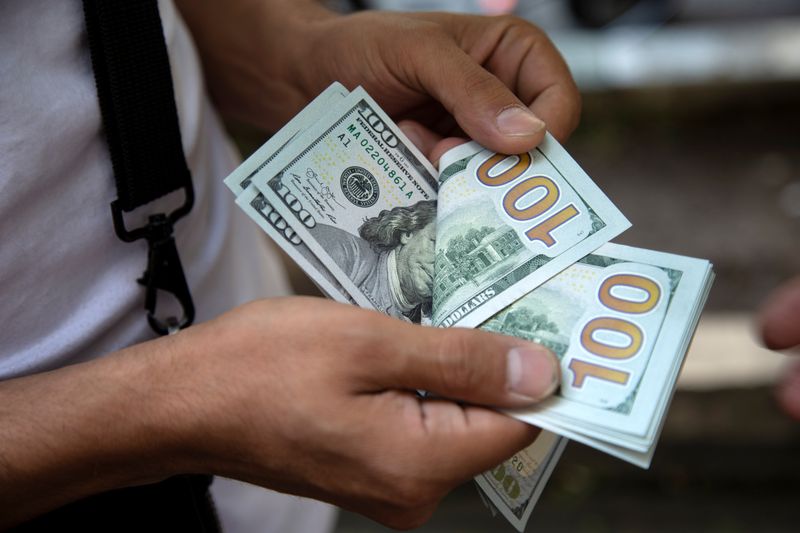
At 04:40 ET (08:40 GMT), the Dollar Index, which tracks the greenback against a basket of six other currencies, traded 0.3% higher at 105.780, on course for a gain of around 1.4% in April.
The dollar has generally been in demand this month as a series of hotter-than-expected U.S. inflation readings has resulted in traders pricing out early rate cuts by the Federal Reserve.
The U.S. central bank starts its latest two-day meeting later in the session, and is widely expected to keep interest rates at the elevated 5.25%-5.5% levels when it concludes its gathering on Wednesday.
Investors will be awaiting indications about whether the Fed still expects to cut interest rates at some stage this year, having initially expected the first rate cut to come in March, then June and now in September.
In Europe, EUR/USD fell 0.2% to 1.0702, struggling to make ground against the strong dollar even after the release of data showing German retail sales rose more than expected in March.
Retail sales increased by 1.8% compared to the previous month, pointing to a recovery in consumption which bodes well for the eurozone’s largest economy, which has just managed to avoid a recession.
Traders are awaiting the release of the latest inflation and growth data for the eurozone as a whole later in the session.
Preliminary eurozone consumer prices are expected to have risen 2.4% on the year in April, still marginally above the ECB’s 2.0% medium-term target, while the region is expected to have grown just 0.1% in the first quarter, growth of just 0.2% on an annual basis.
The European Central Bank has indicated that it is likely to cut its deposit rate in June, but there still exists a great degree of uncertainty over how many other cuts, if any, will be seen this year.
GBP/USD fell 0.2% to 1.2534, retreating in the wake of dollar strength, with sterling set to fall around 0.7% this month.
In Asia, USD/JPY rose 0.4% to 156.88, with the yen falling slightly against the dollar after the previous session’s sharp gains that looked like government intervention.
The pair is still way off the 34-year high of 160.245 seen in the previous session.
Japanese officials have refused to confirm intervention to support the yen, but the country’s top currency diplomat Masato Kanda said on Tuesday authorities were ready to deal with foreign exchange matters around the clock.
Mixed Japanese data factored into the yen’s weakness on Tuesday. While industrial production rose more than expected in March, retail sales missed expectations by a wide margin, presenting a muted outlook for consumer spending and inflation.
USD/CNY traded 0.1% higher to 7.2416 after mixed purchasing managers index data pointed to some slowing in the Chinese economy.
Official manufacturing PMI data showed activity slowing slightly less than expected, while non-manufacturing activity grew substantially less than expected.
AUD/USD fell 0.6% to 0.6527, with the Aussie dollar hit by the release of substantially weaker than expected retail sales data.
To read the full article, Click Here
